
Grand Canyon places focus on visitor safety
Beautiful, but deadly, the Grand Canyon holds the lives of many who fall, accidentally or intentionally, over the edge of its awe-inspiring precipices.
Since the 1870s, there have been an estimated 600 deaths for a number of reasons at the Grand Canyon National Park. Two planes collided over the canyon in 1956, killing 128 passengers and adding a large number of victims to the Canyon’s death toll.
But air accidents are quite rare. The real problem is on the ground. Deaths related to environment factors such as heat stroke and hypothermia and drowning in the Colorado River also add to the number.
| Click on the video at the left to view an audio slideshow about safety risks at Grand Canyon National Park prepared by writer Daniela Goncalves. |
Even though toppling over the edge is not the only cause of the high mortality rate, according to National Park Service reports, an estimated 101 victims have plummeted to their deaths. Forty-eight of these were suicides, but 53 were accidental. People simply wandered too close to the edge for that picture and slipped. Some have even driven off the edge on narrow cliff-side roads or slippery roads in winter.
Road restrictions are in place because of these statistics, implemented on the park by the Code of Federal Regulations, Title 36. The plane collision of 1956 caused stricter air restrictions and regulation in the air space above the Grand Canyon.
Bill Maxwell and his wife, Chris, are experienced climbers and hikers who have gone all over the world in search of interesting climbing spots and now reside in Prescott Valley, Ariz. Being a mere two-hour drive away, they are frequent visitors at the Grand Canyon.
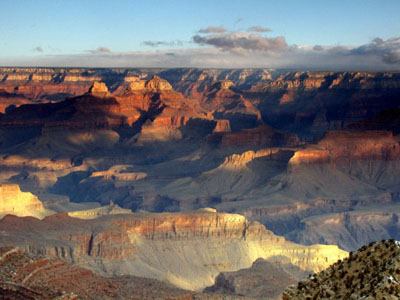 |
The Grand Canyon’s beautiful landscape brings thousands of tourists to the park (Photos courtesy of Bill Maxwell). |
“We go all the time and we see people climb over protective railing to get closer to the edge for a better picture,” Bill Maxwell said. “Rangers or tour guides stop them, make them come back to the safe areas, but they can’t always be around to monitor people.”
Chris Maxwell remembered a seeing a girl pretend to fall as a joke for her friend and almost actually falling in the process.
“She was lucky her friend was around to grab her just in time. That could have been a joke with serious consequences.”
Incidents like these happen far too often. There have been so many that authors Michael P. Ghiglieri and Thomas M. Myers wrote Over the Edge: Death in Grand Canyon, published on May 25, 2001, stating facts and analyzing the statistics.
These incidents, though seen all over the park, are far more common in some areas than others. Desert View, at the eastern entrance of the South Rim portion of the park, is not necessarily safer, but is less prone to careless visitors.
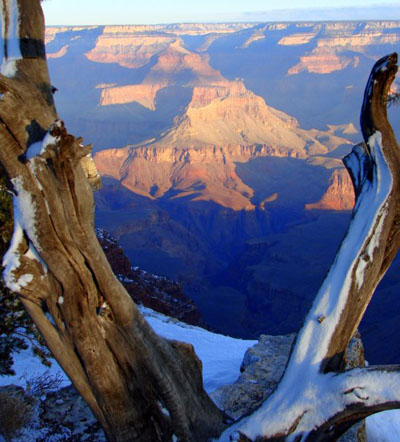 |
Some visitors do not realize the danger in getting too close to the edge at Grand Canyon National Park. It’s a long way down. |
“I’ve never seen anything that scared me out of my wits, but we see people go way too close to the edge all the time” said Christine Palka, a park guide at the Desert View.
Palka explained that going in restricted areas can also be harmful to the park.
“It’s a complicated issue. We don’t want to restrict people, but it’s also doing damage to park as well. For example, here in Desert View, when people stray from the trails not only are they going in potentially dangerous areas, but they can go into places that are part of the parks conservation efforts and may not be good for the plant life that already gets so little moisture here in the desert,” she explained.
Though Desert View has not really had many serious incidents, Grand Canyon Village on the South Rim is where most visitors stay and explore and this location has had its fair share.
“Basically you’ll see people on ridges and ledges,” Jack Howell, an interpretive ranger at Grand Canyon Village, said.
| Narrow roads in winter get icy and slippery. Some cars may swerve off the precipices of the Grand Canyon. | 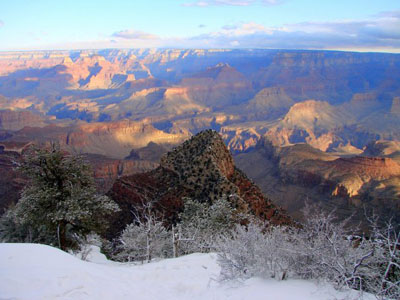 |
“Two young men in the canyon when out on one of these ridges and in order to get on to where they ended up they had to jump across this little stretch between the edge and the [another] ridge,” said Howell, remembering a particular event in which visitors explicitly ignored warnings and signs.
“One of them made it back but the other one was afraid or unable. I think he might have sprained his ankle jumping over. He had to be rescued and it took several hours. They had to set up a tripod with a cable to bring him back.”
The interpretive ranger added that if the young man had fallen in the gap between the two ridges, it probably would have been a 600-foot fall.
“This puts rangers in harm’s way too when they have to make rescues like this,” Howell said.
Incidents like this one are far too common at the Grand Canyon. There are hundreds of amateur videos on YouTube that depict people doing these kind of “death-defying” jumps and ignoring the safety limits set by the park to show off for the camera. And those are just what people caught on camera.
The park has set up guardrails and safety information where possible danger lingers most.
“We do have signs, and I tell people we could put a ten foot fences with barbed wire at the top but that kind of defeats the purpose of a national park,” Howell said.
In fact, putting up too many railings or paving roads would be against federal law.
| The rock face of the Grand Canyon should be observed from afar. This picture was taken with zoom lens and without the need of jumping over the protective railing. | 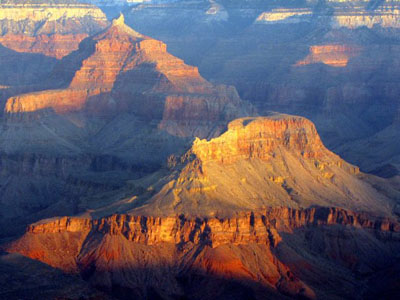 |
|
| The Grand Canyon is a beautiful natural wonder. Visitors should be mindful of the dangers and aware of individual limits when exploring this national jewel. | 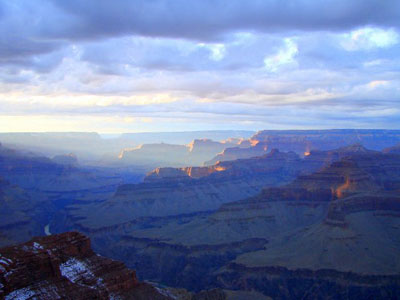 |
“The 1916 National Park Organic Act dictates that the National Park Service must leave national parks in their natural state.”
The numbers do not lie and neither do signs and safety precautions implemented by the Grand Canyon park managers. Park officials can only do so much. It is up to the park goers to be respectful of the dangers and aware of their individual limits, particularly against the astounding yet unforgiving rock face.
“People get a false sense of being safe here in the park,” Howell said.
“They think that national parks should be safe so they don’t often think that they are literally in the wilderness and then they do put themselves in danger without thinking about it.”
Though the Grand Canyon is mysterious and shockingly beautiful, the natural wonder is no walk in the park.

Comments are Closed